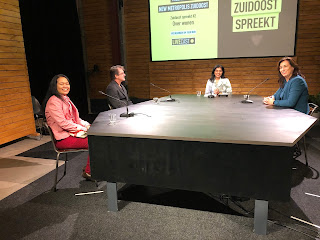HERITAGE IS MULTIDICIPLINES
HERITAGE IS MULTIDICIPLINES
From the beginning, I realize that Indonesia needs to build its institutional infrastructure to empower the development of the heritage sector. It is about saving the identity of the nation that covers a relatively wide range of fields and angles. In theory, an action to cherish a kind of heritage involves many kinds of expertise. In practice, the action is often approached narrowly only by a kind of expertise. Coordination and collaboration seldom happen in the academic or non-academic sectors.
The establishment of two museums about the plantation history called Museum Perkebunan Indonesia, or MUSPERIN, in 2016, might be an appropriate case study to prove that a heritage project needs a multidiscipline approach. The museums are located in Medan, the city that grew due to the development of the plantation industry in the 20th century during the colonial era.
The case study of MUSPERIN shows how important to blend all kinds of expertise.
1. MUSPERIN is about museology. How to convey the long and complicated plantation history of Indonesia within limited space and budget? Which angles of history do we choose? What segment of the visitors do we focus on?
2. MUSPERIN is about the adaptive reuse of two historical buildings, the former Research Institute of the Sumatra Planters Association in Brigjen Katamso Street, and the former office of the Association of Rubber Planters of East Coast Sumatra in Pemuda Street. The transformation of two distinguished historical buildings required specialized knowledge about tangible heritage.
3. MUSPERIN is about archive management. The museum has a lot of archives including half a million fingerprints of the plantation workers. The fingerprints are original. How to keep these priceless archives? How to digitize them? There are some actions have been taken to tackle these issues but there is more to be done. Musperin is looking for cooperation to save its archives.
4. MUSPERIN is about public-private partnership (PPP). The two museums can only be realized with the collaboration of the public, private, and non-government sectors. The key players behind these museums are Soedjai Kartasasmita, the founding father of the plantation industry of Indonesia, Sri Hartini, a museum professional who is the current Director of MUSPERIN, and the Director of the Plantation State Company PTPN3 (Persero) M Abdul Ghani. Financial assistance was from several plantation companies including the Palm Oil Research of BKS-PPS, PT Socfindo, and from Bank Mustika Darma, and Bank Mandiri. The non-government organization Sumatra Heritage Trust assisted in the documentation and revitalization of the buildings, while the government agencies like the Archaeological Agency assisted in archaeological excavation to check the building structure. and the Heritage Conservation Agency of Aceh assisted in wood conservation.
5. MUSPERIN is about industrial heritage. This field is not much addressed yet as a professional branch of the heritage of Indonesia. The fact that now the history of the plantation industry is presented through these museums supported by education programs is promising for the development of industrial heritage. There should be more exposure through museums, studies, and programs about the rich history of the industry of Indonesia.
6. MUSPERIN is about shared heritage and cultural diplomacy. The plantation industry in Indonesia is about shared history with many other countries, especially the European countries that invested in rubber, cacao, tobacco, sugar, and many more commodities, and with the Asian countries that are the origins of the plantation workers. These storylines are addressed in the exhibition in both museums. One of them is an exhibition about Rotterdamse Llyod, the shipping company that transported passengers and goods to Medan during the heyday of the plantation industry. These angles open up many possibilities for cooperation with related countries, too.
I am passionate to share the above facts, hoping that cooperation and collaboration amongst disciplines will happen more often. I hope we realize that cultural heritage has many angles that are impossible to handle only by a certain discipline. When we support each other, something good will happen, MUSPERIN has proved that.








Comments